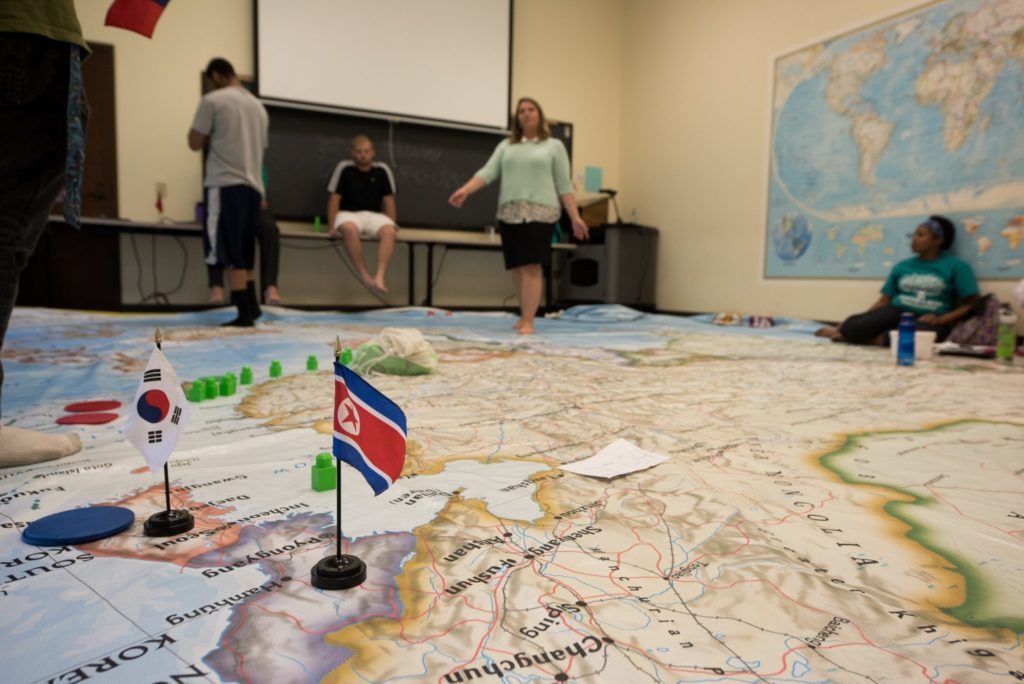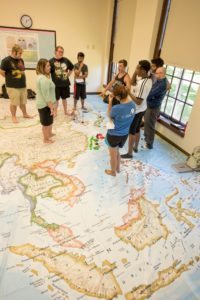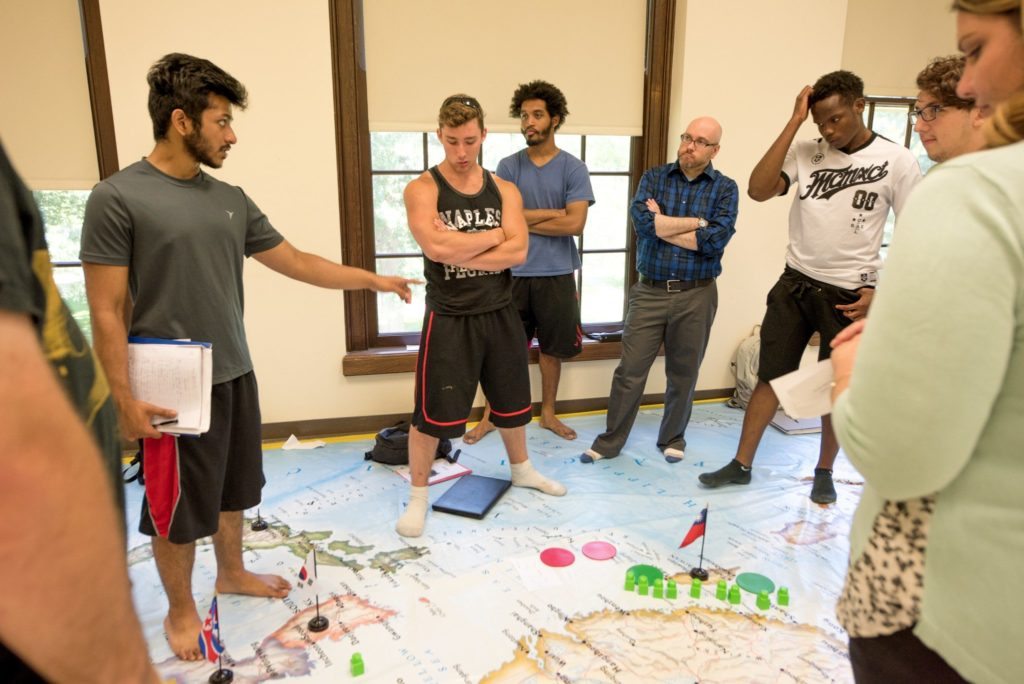
What is foreign policy? How do you teach it? Dr. Lauren McKee, visiting professor at Berea College, answered those questions this summer by teaching a 4-week class titled U.S. East Asian Foreign Policy. The course built up to a crisis event and the students in the class represented different countries in East Asia. Using a 36 foot x 24 foot map on the floor, the students had to react to the crisis that had been introduced. They better visualized the crisis by walking across the giant map and became engaged by identifying places that were discussed in class. Dr. McKee said the map also gave students’ knowledge as to “where the mobilization of naval forces is possible and to calculate how close to another state is too close—that is, where is the 200 nautical mile territorial boundary of your own border.” In addition to the crisis simulation, the class played geographical games that tested the students’ knowledge of Asia.
 “The students learned that foreign policy doesn’t lend itself to easy conclusions,” said McKee, who noted that from the beginning to the end of the course the students’ knowledge and interest levels rose. Dr. McKee reports that on the first day of the course she asked the students their interest in global politics, resulting in a class average of five on a scale of 1-10. She asked the same question about East Asia and the average was five and a half. Dr. McKee asked them the same questions on the last day of class and both scores rose, with an interest in global politics now at 7.9 and in East Asia now at 8.3. Dr. McKee also reported that the class’ understanding of global politics on the first day averaged 3.8, but rose to 7.8 by the last day.
“The students learned that foreign policy doesn’t lend itself to easy conclusions,” said McKee, who noted that from the beginning to the end of the course the students’ knowledge and interest levels rose. Dr. McKee reports that on the first day of the course she asked the students their interest in global politics, resulting in a class average of five on a scale of 1-10. She asked the same question about East Asia and the average was five and a half. Dr. McKee asked them the same questions on the last day of class and both scores rose, with an interest in global politics now at 7.9 and in East Asia now at 8.3. Dr. McKee also reported that the class’ understanding of global politics on the first day averaged 3.8, but rose to 7.8 by the last day.
Dr. McKee stated, “I’ve designed and run simulations in classes before, and participated in them as well.” She noted that as a Ph.D. student at Old Dominion University, she participated regularly in simulation training sessions such as NATO or Joint Forces Staff College would run. These simulations helped her better understand what she was learning in class and developed her appreciation for the usefulness of simulations as a teaching and learning tool.
“The quality of the simulation and any nontraditional teaching method relies on students’ willingness to go along with something different. I’m grateful to have great students who take advantage of these kinds of learning opportunities,” said Dr. McKee, adding, “Many thanks go to the Political Science program at Berea College for making the map financially possible.”
